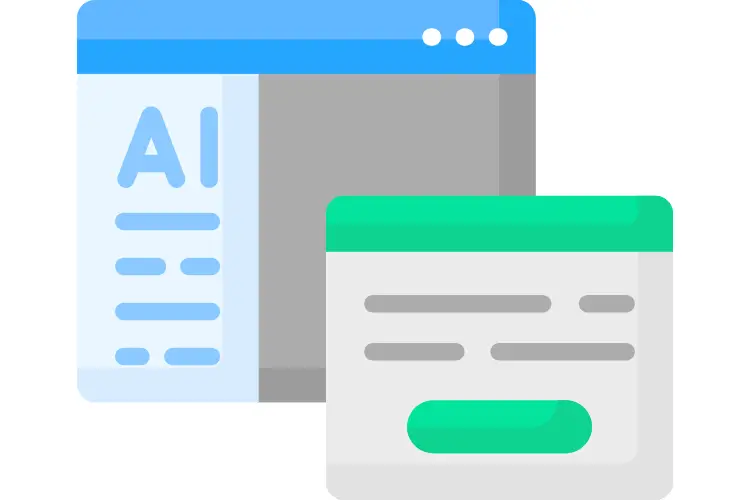In recent years, artificial intelligence has transformed the way content is created. From social media posts to academic essays, AI tools like ChatGPT, Jasper, and others are now widely used to generate text within seconds. While this technology has made writing faster and more accessible, it has also brought new challenges—especially when it comes to identifying what’s written by humans and what’s not.
As more people rely on AI to produce content, there’s growing concern about originality, trust, and authenticity. Schools are worried about students submitting essays written by AI. Journalists are facing issues with fake news that seems convincingly human. Even businesses are struggling to ensure their content reflects real human input rather than automated responses.
This is where an AI detector becomes essential. These tools help users determine whether a piece of writing was created by a human or an artificial intelligence system. They serve as a line of defense against misuse and help maintain transparency in communication.
One of the most trusted tools in this field is ZeroGPT. Known for its high accuracy and user-friendly features, ZeroGPT is being used by teachers, editors, and professionals across industries to verify the source of digital content. In the following sections, we’ll explore how AI detectors work, why they’re important, and how ZeroGPT stands out from other tools available today.
Understanding AI Detectors
As artificial intelligence continues to evolve, so does the need for tools that can recognize AI-generated text. But what exactly is an AI detector, and how does it work?
What Is an AI Detector?
An AI detector is a digital tool designed to analyze text and determine whether it was written by a human or generated by artificial intelligence. These tools are especially useful in academic, professional, and media settings, where authenticity and originality matter most.
AI detectors do not rely on guesswork. Instead, they use advanced algorithms and data analysis to examine how the text is structured, the choice of words, sentence patterns, and more. Based on this analysis, they calculate a probability score indicating whether the content is likely human-written or AI-generated.
How Do AI Detectors Work?
Most AI detectors work using a combination of techniques. Here’s a simple breakdown:
- Linguistic Pattern Analysis: AI-generated content often follows predictable patterns. Detectors look for those patterns, such as repetitive phrases, overly perfect grammar, or lack of emotional tone.
- Perplexity and Burstiness: These are two key measurements. Perplexity checks how “predictable” the text is (lower perplexity often means AI-generated). Burstiness refers to the variation in sentence length and structure (humans tend to be more varied).
- Machine Learning Models: Many detectorsare trained using vast datasets that include both human and AI-written texts. This training helps the system “learn” the differences and improve its accuracy over time.
Why Accuracy Matters
The reliability of an AI detector is crucial. A good tool should minimize false positives (wrongly tagging human writing as AI-generated) and false negatives (missing AI-written content). That’s why users prefer trusted platforms, which continues to improve its detection technology based on real-world usage and feedback.
Limitations to Keep in Mind
No detector is perfect. Some AI-generated content can be edited to sound more human, which might fool even the best tools. On the other hand, writing from non-native English speakers can sometimes be flagged incorrectly due to unusual grammar or phrasing.
Therefore, AI detectors should be used as part of a broader judgment process, not the sole authority. The goal is not to punish AI use but to promote honesty, transparency, and responsibility.
Introducing ZeroGPT: A Trusted AI Detection Tool
As the demand for reliable AI detection tools increases, many platforms have emerged claiming to offer accurate results. However, not all of them are created equal. Among the most trusted and widely used solutions, a powerful AI detector designed to help individuals and organizations verify the authenticity of written content.
What is ZeroGPT?
ZeroGPT is an advanced AI detection platform built to identify whether a piece of text has been generated by artificial intelligence. It has gained popularity among educators, content creators, businesses, and researchers for its ease of use, reliable results, and transparency. Unlike many other tools, ZeroGPT is constantly updated with the latest AI language models to keep up with new advancements in content generation.
Key Features That Set ZeroGPT Apart
Here are some of the standout features that make ZeroGPT a go-to AI detector:
- High Accuracy Rate
ZeroGPT uses deep learning models trained on millions of human and AI-written texts. This helps it detect subtle patterns that distinguish between natural writing and AI-generated output. - Highlighted Sentences
One of the most user-friendly features of ZeroGPT is its ability to highlight the parts of the text that are most likely generated by AI. This makes it easier for users to analyze content line by line. - Batch File Upload
For institutions or businesses working with large volumes of documents, ZeroGPT allows multiple files to be uploaded and scanned at once. This saves time and increases productivity. - PDF Reports
Users can download a detailed PDF report after each scan, which includes the detection results, probability scores, and highlighted sections. This is especially useful for documentation and audits. - Multilingual Support
ZeroGPT isn’t limited to English. It supports AI detection in multiple languages, making it ideal for international users and institutions. - Real-Time Results
With ZeroGPT, there’s no need to wait. The tool provides instant feedback, which is crucial in fast-paced environments like newsrooms or classrooms.
Why ZeroGPT Is Trusted by Millions
With over 10 million users worldwide, ZeroGPT has built a strong reputation based on transparency, consistent updates, and a commitment to responsible AI usage. Whether you’re a teacher checking student essays, a publisher reviewing article submissions, or a brand ensuring content originality, ZeroGPT offers peace of mind.
As we move further into the age of AI, having a reliable AI detector like ZeroGPT becomes essential for protecting intellectual integrity and promoting honest communication.
How ZeroGPT Works
Understanding how ZeroGPT detects AI-generated content can help users make better use of this powerful tool. Unlike basic plagiarism checkers, ZeroGPT is designed to dive deep into the structure and patterns of the text, analyzing it from multiple angles. This gives it the ability to identify content created by artificial intelligence with impressive accuracy.
Step-by-Step Process of Detection
Let’s take a closer look at how ZeroGPT performs its analysis:
Step 1: Input the Text
Users start by pasting the text into the ZeroGPT interface or uploading a document. The platform accepts various file formats, including .txt, .docx, and PDF, making it convenient for different types of users.
Step 2: AI-Powered Text Analysis
Once the text is uploaded, ZeroGPT runs it through its deep learning model. The model has been trained on vast datasets that include both human-written and AI-generated content, enabling it to detect even subtle patterns.
Some of the elements it analyzes include:
- Sentence structure
- Word frequency
- Grammar precision
- Predictability of text (perplexity)
- Sentence length variation (burstiness)
These characteristics help determine if the content appears too perfect or too consistent—common traits in AI writing.
Step 3: Scoring and Highlighting
After analysis, ZeroGPT provides a score that indicates the likelihood of the content being AI-generated. It also highlights individual sentences that are most likely to have been written by AI. This makes it easier to review the results and understand which parts of the text may need revision or verification.
Step 4: Generate a Report
Users can download a detailed PDF report that summarizes the results. This report can be saved, shared, or used as evidence in educational, legal, or professional settings.
Behind the Scenes: Machine Learning in Action
ZeroGPT isn’t just using fixed rules. It continuously learns and improves. Its detection model is trained and updated regularly to recognize the latest writing styles of AI models like ChatGPT, GPT-4, Claude, and others. This makes ZeroGPT one of the most future-proof AI detector tools available.
Custom Settings for Greater Flexibility
One of the strengths of ZeroGPT is its flexibility. Users can adjust sensitivity levels depending on their needs. For example, educators may prefer stricter detection settings, while content editors might choose a more balanced approach. This adaptability ensures more accurate and useful results based on the context.
ZeroGPT’s detection process is both robust and user-friendly, combining powerful technology with practical features. In the next section, we’ll explore how this tool is being used in different industries—from classrooms to corporate offices.
Applications of ZeroGPT Across Different Sectors
The growing reliance on artificial intelligence to produce written content has created both opportunities and challenges. While AI-generated text can save time and effort, it also raises concerns about originality, ethics, and accuracy. This is why a reliable AI detector like ZeroGPT is becoming an essential tool across many industries.
Let’s look at how different sectors are using ZeroGPT to maintain content integrity.
1. Education
One of the most impacted sectors by AI-generated content is education. Teachers and professors are increasingly facing difficulties determining whether students are submitting their own work or relying on AI tools.
How ZeroGPT helps:
- Detects AI-written essays and assignments.
- Supports academic integrity policies.
- Highlights suspicious content to prompt further review.
- Generates downloadable reports for use in discussions with students or school authorities.
By using ZeroGPT, educators can fairly assess student work and promote a culture of honest learning.
2. Content Creation and Blogging
Writers, editors, and bloggers often use AI tools to assist with content production. However, publishing AI-written content without editing can lead to SEO penalties or reduce reader engagement.
How ZeroGPT helps:
- Ensures that content is human-authored or appropriately edited.
- Helps SEO professionals avoid AI-generated fluff that can hurt rankings.
- Identifies parts of a blog post that might need rewriting for better clarity and authenticity.
With this tool, content creators can keep their material fresh, natural, and in line with search engine guidelines.
3. Corporate Communication
In the corporate world, presentations, reports, press releases, and emails must reflect the company’s voice and professionalism. Over-reliance on AI may dilute that tone.
How ZeroGPT helps:
- Confirms whether internal or external communications are human-written.
- Verifies the authenticity of third-party submissions.
- Builds trust with clients and partners by ensuring clear, authentic messaging.
ZeroGPT adds a layer of quality control in sensitive business environments.
4. Media and Journalism
Journalists are under pressure to publish quickly, and AI tools can help. But publishing unchecked AI-generated news can lead to misinformation or legal trouble.
How ZeroGPT helps:
- Verifies whether news articles were written by humans.
- Supports editorial teams in maintaining journalistic standards.
- Prevents fake news or AI-fabricated quotes from slipping through.
This maintains trust and credibility with readers.
5. Legal and Research Institutions
Accuracy and originality are critical in legal writing and research documents. Using AI-generated content without verification could result in factual errors or ethical violations.
How ZeroGPT helps:
- Detects AI involvement in legal briefs, contracts, or academic papers.
- Supports peer review processes with clear AI detection reports.
- Helps institutions uphold strict academic and legal integrity guidelines.
Comparing ZeroGPT with Other AI Detection Tools
With the rise of AI-generated content, a number of AI detection tools have entered the market. While many of them offer similar promises—such as spotting ChatGPT-generated text or identifying GPT-4 content—not all tools perform equally. In this section, we’ll compare ZeroGPT, a trusted AI detector, with some of the most well-known alternatives.
1. ZeroGPT vs. OpenAI Classifier
OpenAI’s AI Text Classifier was one of the early tools released to detect AI-generated text. However, OpenAI itself discontinued it in 2023 due to low accuracy and high false-positive rates.
ZeroGPT Advantages:
- Consistently updated to handle new AI models.
- Offers sentence-level detection with highlighted results.
- Provides downloadable reports and batch processing.
OpenAI Classifier Limitations:
- No longer supported.
- Only gave a general likelihood score without detailed analysis.
- Missed nuanced cases of AI-human hybrid writing.
2. ZeroGPT vs. Copyleaks AI Content Detector
Copyleaks is another popular platform for plagiarism and AI detection. It provides side-by-side comparison and a user-friendly interface.
ZeroGPT Advantages:
- More accurate in distinguishing between human and AI-generated content, especially from GPT-based models.
- Transparent scoring and sentence highlighting.
- Better support for multilingual content.
Copyleaks Strengths:
- Strong in academic use cases and LMS integration.
- Offers API access for developers.
Overall: For general-purpose use with high reliability, ZeroGPT tends to outperform in clarity and accuracy.
3. ZeroGPT vs. GPTZero
GPTZero is geared heavily toward educators and students, making it a popular option in schools and universities.
ZeroGPT Advantages:
- Broader use cases beyond just academic settings.
- Better detection of AI-generated marketing, blog, or business content.
- More comprehensive PDF reporting.
GPTZero Strengths:
- Education-focused design.
- Dashboard features tailored for schools.
Overall: GPTZero is useful for classroom settings, but ZeroGPT offers more versatility across industries.
4. ZeroGPT vs. Writer.com AI Detector
Writer.com’s AI detector is designed as a business writing tool. While it’s sleek and fast, its detection capabilities are somewhat limited.
ZeroGPT Advantages:
- Stronger technical backbone for AI detection.
- Better accuracy when checking long-form content.
- Detailed breakdown of AI-generated segments.
Writer.com Strengths:
- Good for business teams using the Writer platform.
- Simple integration with collaborative tools.
Overall: ZeroGPT is a stronger standalone AI detector if you’re looking for deeper analysis.
Conclusion of the Comparison
While each AI detector has its niche, ZeroGPT stands out due to its:
- High detection accuracy
- Continuous model updates
- Multilingual support
- Deep analysis and reporting tools
Whether you’re a teacher, content creator, or business professional, ZeroGPT provides the flexibility and performance needed to stay ahead of AI-generated content.
Best Practices for Using AI Detectors Effectively
Using an AI detector is simple, but to get the most accurate and meaningful results, it’s important to follow some best practices. Whether you’re an educator, content creator, editor, or corporate professional, the tips below will help ensure effective and ethical use of AI detection tools.
1. Always Use a Clean, Unformatted Text
For the most accurate detection:
- Remove images, headers, and other non-text content.
- Avoid copying from webpages with excessive formatting.
- Use plain text whenever possible.
This allows ZeroGPT to focus purely on analyzing the written content and improves the detection precision.
2. Use AI Detection Early in the Review Process
If you’re checking student assignments, freelance submissions, or corporate documents, it’s helpful to run the content through an AI detector before editing or formatting. This ensures you’re analyzing the raw writing, not the cleaned-up version that could hide AI patterns.
3. Interpret Scores with Context
ZeroGPT provides a percentage score and sentence-level highlights. But remember:
- A 100% AI score doesn’t always mean the text was fully written by AI.
- Sometimes, rephrased or simplified human writing may resemble AI.
- Similarly, AI-written content that has been heavily edited can appear more human.
Always use your own judgment alongside the tool’s result, especially when making high-stakes decisions.
4. Combine with Plagiarism Checkers if Needed
AI-generated text may be original in structure but still pull facts, phrases, or statistics from other sources. Use traditional plagiarism checkers in addition to AI detectors for a complete content review—especially in academia or research settings.
5. Respect User Privacy and Data Sensitivity
If you’re analyzing private or confidential documents (like student essays, legal files, or internal memos), make sure the tool you’re using doesn’t store data. Fortunately, ZeroGPT states that it does not store or reuse any submitted content, helping maintain user privacy.
6. Don’t Rely on AI Detection Alone for Evaluation
AI detectors are support tools—not decision-makers. Use them as part of a larger process:
- Educators should follow up with students if AI is suspected.
- Editors should work collaboratively with writers to improve authenticity.
- Businesses should use results to guide internal quality checks, not as grounds for disciplinary action alone.
7. Stay Updated with Tool Improvements
AI models are evolving rapidly, and so are the detectors that track them. Stay informed about ZeroGPT’s updates and new features to ensure you’re always using the most accurate version. Bookmark the tool or subscribe to updates if available.
Common Myths About AI Content Detection
As the use of AI detectors like ZeroGPT grows, so do the misunderstandings surrounding their capabilities. These tools are powerful, but they’re not magic—and knowing what they can and can’t do will help you use them more wisely.
Let’s debunk some common myths.
Myth 1: AI Detectors Are Always 100% Accurate
The truth: No AI detection tool is perfect. While tools like ZeroGPT offer high accuracy, there are still occasional false positives (labeling human writing as AI) or false negatives (failing to detect AI-written content). AI-generated text that’s been edited or mixed with human input can sometimes confuse even the best detectors.
Tip: Always review the content manually, especially if the results have serious implications (e.g., academic penalties or job rejections).
Myth 2: All AI Detectors Use the Same Technology
The truth: Different detectors use different models, databases, and algorithms. Some are more updated to handle the latest AI like GPT-4, while others struggle with newer content types.
Why ZeroGPT stands out: It frequently updates its detection engine and provides granular, sentence-level analysis, giving users a more detailed and reliable breakdown.
Myth 3: AI Detection Is Only for Schools and Teachers
The truth: While educators were among the first to adopt these tools, AI detection has practical use in many fields—blogging, journalism, legal writing, HR, publishing, and business communication.
Example: Marketing teams use ZeroGPT to ensure blog posts feel human and connect with readers. Legal professionals use it to verify original writing in sensitive reports.
Myth 4: A Low AI Score Means the Content Is 100% Human
The truth: An AI detector may say a text is “likely human-written,” but this doesn’t guarantee it’s original or entirely created by a person. AI content can be paraphrased or rewritten to appear more human-like and bypass basic detection methods.
Best practice: Combine AI detection with common sense and, if needed, plagiarism checkers for a full assessment.
Myth 5: Using AI Tools Is Always Wrong
The truth: AI tools can be extremely helpful. Many writers use AI for brainstorming, outlining, or rewriting drafts. The problem arises when people present AI-written content as entirely their own without review, modification, or transparency.
What matters: Honesty and quality. Using AI as a writing assistant is fine—as long as the final output is reviewed, fact-checked, and refined.
Myth 6: AI Detectors Violate User Privacy
The truth: Some users are afraid that their uploaded text might be saved or misused. However, trusted tools like ZeroGPT clearly state that they do not store submitted content and ensure privacy by design.
Always check: Before using any tool, review its privacy policy and terms of use.
Understanding the facts about AI detection makes it easier to apply tools like ZeroGPT responsibly and effectively. In the next section, we’ll answer some of the most frequently asked questions to help both beginners and experienced users.
Frequently Asked Questions (FAQs)
To help users get a clearer understanding of how AI detection works—especially with tools like ZeroGPT—we’ve answered some of the most common questions people have. Whether you’re just getting started or already using an AI detector regularly, these FAQs will clear up confusion and guide you toward smarter usage.
Q1: How accurate is ZeroGPT in detecting AI-written text?
Answer: ZeroGPT has been proven to offer high accuracy, especially when detecting text generated by GPT-3, GPT-3.5, and GPT-4. It uses advanced language models to analyze sentence structure, patterns, and probability of AI generation. While not 100% perfect (no tool is), its precision and sentence-level highlights make it one of the most reliable options today.
Q2: Can ZeroGPT detect content created by ChatGPT or GPT-4?
Answer: Yes, ZeroGPT is specifically designed to detect content generated by ChatGPT (based on GPT-3.5 and GPT-4). It’s regularly updated to align with the latest models and output behavior, giving it a strong edge in identifying even well-polished AI text.
Q3: Does ZeroGPT store or save the content I check?
Answer: No. One of the best things about ZeroGPT is its commitment to privacy. It does not save or reuse any text submitted for analysis, which means your data is safe and won’t be stored or shared with third parties.
Q4: Can I use ZeroGPT for checking long documents?
Answer: Absolutely. ZeroGPT supports the analysis of large chunks of text, including full articles, essays, and research papers. For even longer files, you can break them down into sections or use the Batch File Upload feature for PDFs, Word docs, and more.
Q5: Is ZeroGPT free to use?
Answer: ZeroGPT offers a free version with core features such as real-time detection and sentence-level analysis. For additional features like batch uploads, downloadable reports, and unlimited usage, premium plans are available at competitive rates.
Q6: Can it detect paraphrased or edited AI content?
Answer: In many cases, yes. ZeroGPT has a high success rate even when the AI content has been lightly paraphrased. However, heavily reworded or hybrid human-AI content may lower the detection accuracy, which is why human judgment is still important in the evaluation process.
Q7: Does ZeroGPT work for languages other than English?
Answer: Yes, it supports multiple languages including Spanish, French, German, and others. That makes it ideal for global users, educational institutions, and international companies who need AI detection across language barriers.
Q8: Is there an API for developers or institutions?
Answer: Yes. ZeroGPT provides an API that allows developers and organizations to integrate AI detection into their platforms, websites, or workflows. This is especially useful for LMS platforms, publishing tools, or editorial dashboards.
Q9: Who should use an AI detector like ZeroGPT?
Answer: AI detection tools are useful for:
- Teachers and schools verifying student assignments
- Content marketers ensuring originality
- Bloggers checking their posts for human tone
- HR professionals reviewing resumes or applications
- Publishers confirming editorial standards
Basically, anyone who works with written content can benefit from using an AI detector like ZeroGPT.
Final Thoughts: The Future of AI Detection Tools
As artificial intelligence continues to evolve, so too will the ways we create, share, and evaluate written content. AI detectors play a crucial role in maintaining trust and transparency in communication, education, and business. But what does the future hold for these tools?
AI Detectors Will Become More Sophisticated
The next generation of AI detectors will likely:
- Improve accuracy even further by leveraging advances in machine learning.
- Detect more subtle AI writing patterns and hybrid human-AI content.
- Support even more languages and specialized domains like legal or scientific writing.
Integration with Everyday Tools
We can expect AI detectors to be integrated more deeply into popular software, such as:
- Word processors (Microsoft Word, Google Docs)
- Learning management systems (LMS)
- Content management platforms (CMS)
- Email clients and collaboration tools
This integration will make AI detection seamless and accessible to a wider audience.
Ethical and Transparent Use Will Be Key
As AI-generated content becomes common, ethical guidelines will shape how detection tools are used. Transparency about when and how AI is involved in writing will become standard. AI detectors will help uphold these standards by providing clear, unbiased analysis.
Empowering Humans, Not Replacing Them
While AI writing tools assist creativity and productivity, detectors remind us that human judgment and critical thinking remain essential. The best outcomes come from combining AI’s speed with human insight.
In Summary
- AI detectors like ZeroGPT are vital in today’s AI-driven world.
- They help preserve authenticity, originality, and trust in content.
- Understanding their strengths and limitations allows you to use them effectively.
- The future promises smarter, more integrated, and ethical AI detection solutions.
By embracing these tools thoughtfully, you can stay ahead of the curve—whether you’re an educator, writer, marketer, or business professional.




